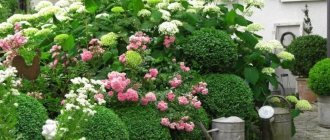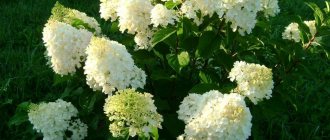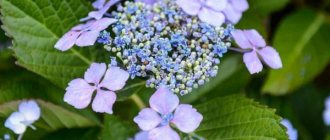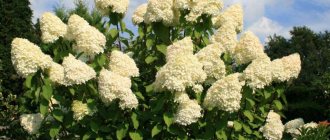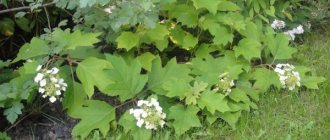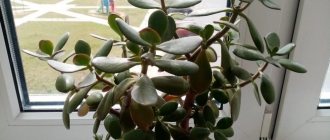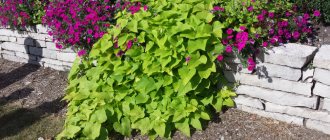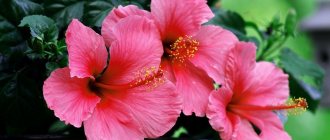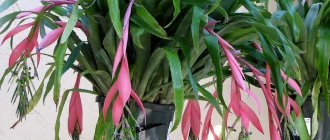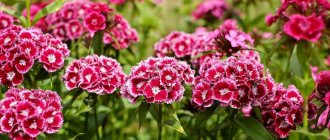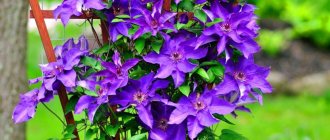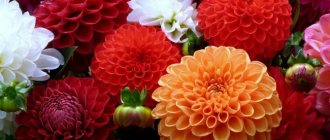Hydrangea has been and remains one of the most popular crops, which enjoys great love among modern gardeners. The fact is that this flower is quite unpretentious, and at the same time, with its beautiful and incredibly decorative blooms, it can delight gardeners from spring until late autumn, when the first frosts occur. Today, a gardener can choose any hydrangea from several dozen different species. Hydrangea Invisible - we will talk about this variety in more detail in our article.
In fact, this variety was imported quite recently, but has already become quite popular in our country due to some excellent properties. In this article we will talk about its features and characteristics. And this information will be of interest to both beginning gardeners and those gardeners who already have experience in growing hydrangeas, but would like to find newer and more interesting varieties that will decorate their garden plot or decorated flower beds.
Hydrangea Invisible: planting features and care tips
Foolishly, I thought that planting tree hydrangea seedlings was carried out by transshipment into open ground.
That’s what I did in the fall, and this became the reason for the death of my beauty. When I dug it up in the spring and examined the dried remains, I was horrified. The woven ball of roots, generously seeded with fertilizer, simply could not cope with rooting and died!
I sat down to study the experience of gardeners and collected a whole selection of tips that I share.
Lush pink caps above green foliage resemble floating clouds.
Basic rules for transplantation
- place. A semi-shaded place is best for planting roses and hydrangeas. You can also plant shrubs both in the shade and in more open areas, but it is still better to avoid places that are too sunny, where the plant will be exposed to prolonged exposure to direct sunlight;
- priming. The beautiful hydrangea Bouquet of Roses, as it is simply called, prefers nutritious soils with an acidic or slightly acidic reaction. The most important condition for soil is good drainage. If there is an excess of nitrogen in the soil, the plant will experience lignification, and the bush will bloom much worse. But in calcareous soils the shrub will not grow at all;
- deadlines. Young shrubs can be planted in open ground in the spring only when stable heat sets in and the soil has warmed up sufficiently, since unexpected night frosts can destroy a young, fragile root system;
- transplant process. For the plant to be transplanted, prepare holes corresponding in size to its root system, since the roots must be freely located. Then a layer of drainage material must be added to the hole, which will prevent moisture from stagnating in the root system. If several plants are planted at once, the distance between them should not be less than 1 m.
Rose Eden Rose - description and characteristics of the variety
Large-leaved hydrangea blooms long and colorfully
When planting seedlings, do not bury the root collar of the plant too deep into the soil.
Plant in spring or fall
- Landing. Hydrangea should be planted in a spacious planting hole with fertile soil. To do this, you need to dig a hole measuring 50x50 cm, fill it with sand, peat and garden soil in equal proportions. Plant a seedling and cover it with soil. The root collar can be deepened by 2-3 cm.
- Care. After planting, the seedling must be watered abundantly. To retain moisture, mulch the soil around the bush with sawdust or leaves. In dry weather, the plant must be watered at least 2 times a week, 4-5 liters for each bush.
About the features of growing hydrangea in Siberia
Since Siberia has a cold and often dry climate, it is important to consider several rules for growing hydrangea in this region:
The best varieties of varieties are paniculata hydrangea, as well as any tree-like bushes. It is better to plant bushes in spring rather than autumn. For the winter, the plant needs to be covered very well, using the methods described above. It is especially important to pay attention to the roots - they are protected with a large layer of rotten leaves, peat and rotted manure. Since Siberia often experiences dry, hot summers, it is better to increase watering to 2 times a week. It is better to water at sunset so that the sun does not burn the foliage. Due to the same hot summer, it is better to place the bushes in places with slight shading - open sun can have a detrimental effect on hydrangeas.
Origin and external features of Invisible hydrangea
Hydrangea has 80 subspecies, which were not popular among gardeners. The species was considered burdensome to care for, not resistant to frost, and the varieties differed little in color. Hydrangea Anabelle appeared in 2010 in North Carolina. The flower became a sensation because of its unpretentiousness and brightness. The creator bred it from the Annabelle variety.
Blooming Hydrangea Invisible
One of the main characteristics is frost resistance. The bushes can easily withstand temperatures down to -35 C. Even if the shoots are completely frozen and only the root remains, the plant will survive and bloom. Sometimes hydrangeas that have experienced stress from low temperatures bloom more profusely. It is important to ensure that the root is not damaged.
- bush height 80 cm - 1.5 m;
- in diameter it reaches 2.8 m;
- its shape is spherical;
- shape, width of the inflorescence – round, 20 cm;
- shoots are strong and can withstand the weight of flowers;
- flowers are pink (dark or bright), reaching 2 cm in diameter;
- leaves are large, elongated, dark green, with jagged edges.
Growing hydrangea
There are very few compact varieties that can be kept at home. This plant is very large and space-loving. When planting, they usually take into account the hydrangea’s love for open areas and try to please it.
This sun-loving plant does not like shade or strong winds. If the hydrangea is in partial shade, the number of flowers on it will decrease, in addition, it will begin to bloom a little later. The ideal place for planting is the eastern side, so that the bush receives maximum sun in the morning.
Soil composition
Hydrangea has a unique ability - its color depends on the composition of the soil in which it grows. Hydrangea loves fertile clay soils rich in humus. Does not tolerate red earth soil well. Sandy soils are completely contraindicated for hydrangeas. As for acidity, on acidic soils hydrangea turns out to be the brightest, while on neutral soils it blooms in faded shades. With alkaline soil, hydrangea leaves turn yellow and development slows down.
It is not without reason that experienced gardeners advise acidifying the soil on which this plant grows, and treating the bush itself with iron chelate. Even about 50 years ago it was popular to bury nails or iron horseshoes under each plant.
Prepare the following fertilizer mixture for the bush:
Take forest soil, peat and humus in equal quantities. Urea, potassium sulfate and superphosphate - 30 grams of all components. It is advisable to dig up the soil under the spruce so that it is acidic. Mix everything and use when planting hydrangeas.
How the Invisible hydrangea blooms
The variety blooms from the first days of summer to mid-autumn. Often the flowers remain until the first frost of November.
Important! The color of the plant changes during the flowering period. Dark, faded, richly bright shades replace each other.
The size of the inflorescences can be controlled by proper pruning. If they have enough space in the bush, each will reach 30 cm in width.
Hydrangea Invisible is known for its variety of shades
Popular varieties in gardening with photos
There are several dozen varieties of paniculata hydrangea, but below we will look at the most popular varieties for the garden.
Anabelle
A voluminous shrub up to 1.5 m high with a wide rounded crown consisting of large bright green leaves. Blooms from June to late summer. Lush inflorescences with a diameter of 15-20 cm are greenish at the beginning of flowering, then acquire a uniform white color.
Vanilla Fraise
A unique variety that will become the pearl of the garden. The bush is lush and spreading, about 1.5 m high, blooms profusely from early August to late autumn. We admire the dense, pyramidal inflorescences, 25-30 cm long, painted white at the top and lilac-pinkish below.
Grandiflora
This variety is a classic in garden culture and the most frost-resistant. The height of the bush reaches 2 m, the shoots are straight and strong, the leaves are large. Inflorescences are creamy-white, sometimes pinkish panicles up to 30 cm long, formed on the tips of the shoots. Flowering lasts from July to September.
Great Star
An extraordinary variety with very large (up to 5 cm in diameter) snow-white flowers, the petals of which look like blades. The inflorescences are spherical, flattened, and consist of two types of flowers: with long petals and several hundred small fertile flowers without fragrance. The bush is voluminous, reaching a height of 2-3 m.
Diamond Rouge
The most striking representative of the paniculate species. The crown of the bush is wide, height is up to 1.2 m. The inflorescences are large (up to 35 cm), rounded at the top, changing their color from white to deep red. The variety blooms in July. In autumn the foliage turns orange.
Limelight
A famous Dutch variety that has received worldwide recognition. The plant is powerful, reaching a height of 2 m in the garden, but can also be grown as a potted plant. Blooms from July to the end of September. The flowers are lemon-white, greenish at the top, collected in oblong panicles 25-30 cm long.
Magical Sweet Summer
A low (up to 1.2 m) shrub with a dense crown and even shoots directed towards the groans. The color of the inflorescences changes depending on the soil, weather and time. At the initial stage, the flowers are greenish, then become pinkish at the top and creamy below.
Pink Diamond
A lush shrub up to 2 m high with erect thin shoots forming large (up to 30 cm) cone-shaped inflorescences. Flowering lasts from early July to mid-autumn. The flowers are pinkish when they bloom, becoming bright red over time and exuding a strong aroma.
Pinky Winky
Tall (up to 2 m) shrub with strong, but thin and weakly leafy shoots. Blooms from mid-summer to late October. The inflorescences are loose, you can see each flower. The color is two-tone - the lower part of the petals are purple, and the upper half is creamy white.
Sunday Fraise
A spreading shrub 1-1.5 m high with straight shoots inclined to the ground. Blooms early, from June to July. The color of the inflorescences gradually changes from white to violet-purple. In 2010, at a flower exhibition in Holland, the variety was awarded a silver medal.
Silver Dollar
A lush bush with a spreading crown up to 2.5 m in diameter and large pointed leaves. Blooms in July. The inflorescences are cone-shaped, up to 30 cm in length, white-cream at the bottom, lemon yellow at the top.
Tender Rose
A rare large-leaved variety with bright flowers collected in decorative, deep pink inflorescences rounded at the top, 20 cm in length. The shrub is voluminous, up to 2 m high, blooms from July to early autumn, prefers partial shade.
Phantom
An interesting and very decorative variety with huge, up to 40 cm multi-colored inflorescences - at the beginning of flowering they are white with greenish-yellow splashes, later the white color turns pink, but the greenish color remains, which is why a very unusual color is obtained. The bushes bloom until autumn and can easily withstand even Siberian frosts.
Everest
An elegant two-meter shrub with dark green large leaves and powerful shoots. Blooms from mid-summer. The inflorescences are long, up to 40 cm, quite loose. The color is pinkish-white, over time the pink color turns purple.
Unique
The variety was bred in the middle of the last century by a married couple from Belgium. The shrub is fast-growing, the shoots are straight and sparsely leafy. The inflorescences are long (30-40 cm) and loose, white, sometimes pinkish. Despite its inconspicuousness, the variety was awarded the Royal Horticultural Society AGM award.
Transplanting Invisible Spirit hydrangea after purchase into open ground
It is important that the flower adapts and takes root correctly. To do this, take into account recommendations for choosing a place and landing time.
What is needed for planting
You need to choose the right cuttings, seedlings or seeds. A good cutting has a couple of leaves, a seedling has 3 or more buds. The seeds of this variety are bright brown, elongated, small. High-quality seed does not have dirty spots or damage.
Selecting a location
In sunny regions, the crop is planted under openwork partial shade. The tree-like plant tolerates heat calmly. In a bright place, the soil at the root is moistened several times more often. In the northern regions, the flower takes root better in sunny places, under direct rays. The area is cleared of weeds, the ground is loosened, slightly leveled, and nutrients (fertilizer) are introduced.
Boarding time
Determined by the climate of the region. Spring and autumn are suitable for southern Russia. Flower growers in other regions plant the crop only in the spring so that it has time to adapt.
Step by step planting process
Planting a seedling includes the following steps:
- Check the root system. There are no damaged or dried elements on the roots of a high-quality seedling. They are the same size, not bunched together.
- Make a hole that will accommodate the rhizome. Add a little humus with sand.
- Place the seedling so that the neck is in line with the ground. The roots adapt better if they are first left for 2 hours in heteroauxin.
- Cover the root with soil and water it abundantly. As the soil settles, more soil is added.
- Maintain soil moisture so that rooting and development proceed normally. The optimal water temperature is 25 degrees. Watering schedule: 2 times a week.
Important! Flowering occurs only 4 years after planting the flower.
Hydrangea tree Invinsibel
A shrub with the proud name of Invisibel hydrangea can become an excellent decoration for any garden, park or just a local area. This bush, up to one and a half meters high, can serve as a natural hedge, which is so necessary in any garden. In a word, finding a use for it is as easy as shelling pears, and therefore not only experienced, but also beginning gardeners, as well as landscape designers who know a lot of ways to make a garden more beautiful with the help of Invisibel hydrangea, buy it in bulk.
Particular attention should be paid to small dark pink flowers, which are collected in the upper part of the bush in the form of a lush cap.
Our service should also be noted. In particular, our fast delivery is the result of the coordinated work of all employees. We hope that Invisibel hydrangea seedlings will amaze every gardener, and he will definitely continue his pleasant and reliable cooperation.
Choosing a landing site
Hydrangea cannot be called too demanding, and therefore the site for hydrangea should be chosen based on the principles of landscape beauty. Everything else can be decided on your own. For example, the quality of any soil today is easy to improve. In order for the soil to be more nutritious and suitable for growing Invisibel hydrangea, you need to buy any compounds that improve the quality of the soil. They can be either mineral or based on organic compounds. Classic compost can be considered ideal; manure and mullein are also suitable.
As for the sun, there are no restrictions. It must be remembered that direct sunlight dries out the soil, and therefore in such an area you should more often monitor the level of humidity on the surface of the soil to prevent it from drying out completely.
Transplantation into open ground and additional care
Invisibel hydrangea seedlings are best planted in May. It is also advisable to harden them first, for which the pots must be placed outside for several hours for several days. When transplanting, a hole is dug into which the seedling is placed, which must be covered with soil. The seedling must stand straight so that the direction of its growth is not disturbed.
The plant will delight the gardener with flowers from July, and at first they will be dark pink, and then the color will change to lighter, and under certain conditions the inflorescences may acquire a blue tint. Read more about this process in this article. For the splendor of flowers, as well as for the general development of the bush, it is necessary to apply any nutritional composition two or three times a season. For the winter, the root part of the plant should be covered with spruce branches, fallen leaves, or just old newspaper. With the onset of spring, before the sap begins to flow, it is necessary to remove old and frozen branches in order to thus prepare the bush for the new growing season.
Propagation of hydrangea Invisible Spirit
Tree hydrangea Invincibelle is propagated by 4 methods:
Propagation by cuttings
In July, annual cuttings are cut off. In order to take root better, they are covered with rootstock. Such a shoot is inserted into a mixture of coarse sand and acidic peat in a 1:2 ratio. Sphagnum moss is also added to the mixture.
The cuttings are immersed in the soil, leaving 5 cm between them. They are rooted 3 cm, at a slight slope.
Growing from cuttings
Choose a strong shoot and bend it to a small depression in the ground. Cover with earth and secure with wire. A well-fixed layer will not straighten and take root.
Soil is poured into the hole 4 times during the summer season. After a year, the roots will get stronger, you can cut off the seedling with pruners. The cuttings should grow in the shade. After a couple of years it can be planted in permanent soil.
Caring for Invisible Spirit hydrangea
Hydrangea invincible spirit needs the following manifestations of care:
- feeding;
- mulching;
- watering;
- formative and sanitary pruning of bushes.
Watering mode
Invincibelle spirit hydrangea loves liquid. You need to water her once every 3 days. Watering volume – 10 l. Do not water with too cold water (below 20 degrees).
Top dressing
Feed the flower 4 times:
- during shoot growth, nitrogen fertilizer is introduced;
- when buds appear, fertilize with superphosphate and potassium sulfate;
- the remaining fertilizers continue to add substances from the previous point.
Mulching
Carry out as soon as shoot growth begins. Peat and sawdust are used, which are distributed in a layer of 5 cm.
Attention! Mulch should not get on the trunk or shoots. Under its direct influence, the plant will begin to rot.
Shrub pruning
At the beginning of spring, formative pruning is performed to promote the development of strong branches and wide paniculate inflorescences. If the bush is too thick, the circulation of nutrients is impaired. Some of the shoots are cut off, the plant is fertilized with a complex of minerals. Sanitary pruning involves the removal of damaged, diseased, dry, old shoots.
Features of care during the flowering period
During the flowering period, make sure that:
- the plant had enough moisture;
- pests did not appear on it;
- pruning was carried out correctly.
Hydrangea Invincible Spirit will be healthy if you place it in fertile soil, regularly water it, and provide access to sunlight.
Features of care during the rest period
The dormant period for tree hydrangea Invisible is late autumn, winter. At this time, the bush is trimmed, tied up, and is under film. It does not require additional care.
Preparing for winter
Prepare the crop for cold weather sequentially:
- In September, water less abundantly than in summer. The amount of water is reduced gradually. Before the November cold, watering is reduced to zero.
- At cold temperatures, the crop sheds its leaves. To help it, you need to cut off the inflorescences and tops of the stems.
- After cutting off the leaves and shoots, the bush is tied up.
- The soil around the Invisible Spirit hydrangea is sprinkled with a fresh layer of mulch.
- If the autumn season turns out to be rainy, the bush is covered with film. A wire frame covered with polyethylene is built over the hydrangea. The film must allow air to pass through from below so that the bush does not suffocate. Wrapping is mandatory for northern territories.
Hydrangea after winter
Hydrangea Invisible is a young variety, well adapted to aggressive climates and temperature changes. This is an unpretentious crop with bright lush inflorescences. The only drawback of the flower: it will have to wait for flowering.
Hydrangea paniculata Kyushu
For alley planting, Beautifully flowering, Most beautiful in summer, Most beautiful in autumn,
Extremely valuable crop for landscape gardening. One of the few shrubs that bloom from the second half of summer until late autumn, when there are very few flowering plants. It deserves the widest distribution in city plantings, squares and parks, inside neighborhoods. These plants can be used to create small alleys, given their resistance to smoke and gas.
Mature plant height (m): 3
Description
Hydrangea paniculata Kyushu is a shrub with a round, dense crown. One of the few shrubs that bloom from the second half of summer until late autumn.
An extremely valuable crop for gardening and park construction.
Deserves the widest distribution in urban plantings, squares and parks, inside neighborhoods; given their smoke and gas resistance, they can be used to create small alleys.
Bloom
Flowers in long, wide-pyramidal, densely hairy panicles up to 25 cm long. Fruiting flowers are small, white, falling off early; sterile flowers are much larger, up to 2.5 cm in diameter, with four white petals that later become pink. The first flowering and fruiting is observed at 4–5 years. The flowers are honey-bearing.
Requirements
Hydrangea paniculata Kyushu does not like open sun, prefers partial shade (in the sun the inflorescences become smaller and growth slows down). Does not like sandy soils, prefers clayey and acidic soil (the more acidic the soil, the brighter the flowering; on neutral soils it turns pale and does not feel well).
Landing
Shoots pruned in spring are used for propagation: cuttings with 4–5 buds are prepared, placed in a weak Kornevin solution for 2 days, then planted to a depth of two buds in loose acidic soil. Plantings are shaded and regularly moistened, preventing the soil from drying out. When young leaves appear, the shading is gradually removed.
They are planted in a permanent place at the age of 4–5 years: if a single planting is planned, then it is necessary to prepare a hole of 50–70 cm. If the plant is planted for a hedge, it is necessary to dig up a meter strip and plant it after about 1 meter.
When the plants grow, thin out the hedge so that the distance between adult plants is 2.5 meters. The plantings are mulched with peat and a compost layer of 5–8 cm.
It is better to plant in the spring, slightly shortening the roots and all annual shoots, leaving 3-4 pairs of buds on them.
Care
Annual heavy pruning before bud break is necessary for the plant to bloom well (if the plant is not pruned, it may not bloom). The inflorescences remaining on the bush are cut off in late autumn so that the branches are not broken by snow. Weak and thickening shoots are removed completely. Frozen shoots are cut back to healthy wood in the spring, and they bloom the same year; annual shoots are shortened, leaving 3–5 pairs of buds.
When growing Hydrangea paniculata in the form of a bush, the shoots are cut into three buds (in the same year the hydrangea blooms, forming lush inflorescences up to 40 cm long at the end of each shoot). The standard form is trimmed more sparingly and the inflorescences on it are smaller - 20–25 cm, but in larger quantities. Old bushes can be rejuvenated by pruning to perennial wood or to a stump. After this, the decorative effect of the bush is restored in the second year.
In the first summer, it is better to remove the flower stalks - this promotes faster development of the plant.
Watering abundantly and regularly.
Frost-resistant down to -25ºС. In the first year after cuttings, the plant must be covered; from the second year, young bushes do not need shelter.
In the fall, feed with mineral fertilizers, in early spring - with a urea solution at the rate of 18–20 g per bucket, 2–3 buckets per plant. You should fertilize frequently, because... The shrub is fast-growing and profusely flowering, it needs a lot of nutrients.
Brief description of culture
- Shape: deciduous bush with a round spreading crown.
- Size: bush 90-150 cm tall, up to 280 cm in diameter.
- Flowering period: June - early October.
- Flower color: from dark pink to bright pink.
- Inflorescences: irregular spherical shape, 20-30 cm in diameter.
- Leaves: large, oblong, green (with a yellowish tint in autumn) with serrated edges.
Tree varieties of hydrangea were not popular among amateurs and experienced gardeners. They were fastidious to care for, not too resistant to cold, and also did not differ much in color from the mother form (all inflorescences of the subspecies are white). This was the case until the appearance of a new variety - Invincible Spirit. Hydrangea has absorbed the best qualities, and most importantly, acquired an unusual color of inflorescences.
Hydrangea Invincible Spirit (flower appearance)
Nurseries often use the term Pink Annabelle when selling this species, which is incorrect. After selection, hydrangea was patented as invincibelle spirit, which translated from English means “invincible spirit.”
Interesting! A new flower was developed from the Annabelle variety in 2010. The author is breeder T. Early from North Carolina, working at the research center of a local university.
Description of the variety
The variety Invisible (Invincibelle Spirit) appeared quite recently and, perhaps, not every gardener knows about its existence. It is a tree-like shrub with deciduous leaves, the shape of which resembles a delicate cherry marshmallow, as its inflorescence comes in both dark and bright pink colors. A distinctive feature of this variety is the change in the shade of the petals during flowering: at an early age they have a pink tint, which changes to a darker color over time.
Did you know? In the Japanese city of Hirata, a garden center was created where 372 species of hydrangeas were planted. It was even included in the Guinness Book of Records under the name “Jupia Land Hirata”.
Thanks to selection, Invisible hydrangea has received the best qualities and invariably attracts the attention of others. It has fairly strong shoots that do not break when bent. It is frost-resistant, withstanding temperatures down to -37°C, and its condition does not deteriorate due to cold weather, but, on the contrary, improves, increasing the abundance of flowering
It is frost-resistant, withstanding temperatures down to -37°C, and its condition does not deteriorate due to cold weather, but, on the contrary, improves, increasing the abundance of flowering.
Features and appearance
Hydrangea Invisible has excellent frost resistance; it can easily overwinter in a flower bed. If it suffers slightly from the cold, this will not have a bad effect on the plant; rather, on the contrary, it will create favorable conditions for the subsequent formation of an abundance of inflorescences. Even after the shoots have completely frozen, hydrangea is able to bloom. The main thing is that the root system is not damaged. This variety is assigned a high frost resistance class: USDA 3, it can withstand temperature drops down to −37°C.
The average width of the bush is about 150 cm, height 120 cm. The shoots are quite strong, occasionally bending due to the weight of the inflorescences.
Reproduction and planting
This variety is propagated in three ways: by dividing bushes, cuttings or seeds.
Planting seedlings
To propagate by division, a woody shrub is dug up and divided into 2-3 parts. There should be at least 3 buds left on each.
For planting tree hydrangea varieties Invincibelle Spirit, loose, moderately moist soil of average fertility is suitable. Alkaline soils are not suitable; soil pH should be 4.5-7.
Hydrangea tree Invisible Spirit
Flowers should be planted in early spring in shaded areas. When landing you need to follow the instructions:
- Prepare a hole measuring about 50*50 cm (depending on the volume of the seedling's root system).
- If the soil is poor in nutrients, the hole should be expanded and filled with soil of high fertility.
- Insert the bush with formed roots into the hole and straighten them.
- The root collar should be deepened no more than 2.5-3 cm.
- Cover with fertile soil.
- Water the seedling generously.
- Mulch with a layer of peat 5-7 cm thick.
Propagation by cuttings
In mid-summer, one-year-old young side shoots are cut out. To improve rooting, treat with root. Then they are placed in a humid environment: coarse sand is mixed with acidic high peat (1:2) with the addition of sphagnum moss.
Important! The cuttings are planted at a distance of 5 cm from each other, rooting 2-3 cm at a slight slope.
Seeds
You should prepare the landing site in advance:
- clear of weeds;
- dig up;
- level with a rake;
- fertilize.
Hydrangea planting seeds
Then scatter the seeds randomly, lightly pressing them into the soil, but without burying them. Make a small mound of sand on top (this is drainage) and spray with a small amount of water.
Landing in the Leningrad region
When planting hydrangeas, you need to follow some rules. In particular, this concerns the timing and selection of the most suitable site for the crop.
It is important to take into account the plant’s requirements for the soil, because
staying in poor conditions will negatively affect the survival rate of the culture, and sometimes can lead to its death.
When to plant
In the climatic conditions of the Leningrad region, it is better to start planting hydrangeas in the spring. If you carry out the procedure in the fall, there is a risk that early frosts will destroy the root system of the still very weak shrub. The best period is the middle or end of March, when the soil is sufficiently warmed up and return frosts will not overtake the young bush by surprise.
Find out what makes Pink and Rose hydrangea so special.
Selecting a location
In the conditions of the northwestern regions, it is preferable to plant hydrangea in a sunny area, light partial shade is allowed. The plant must receive sufficient light and heat - this will ensure colorful, lush flowering and minimize the risk of developing fungal infections. It is advisable that the site is not located in a draft, which negatively affects the development of the crop.
Hydrangeas love moisture very much, so they need to be watered often. However, swampy soil is unacceptable for plants, because, being in waterlogged soil, the roots of the shrub can become sick and begin to rot. Therefore, if you plan to plant hydrangea near a pond or in an area with shallow groundwater, lay a drainage layer of stone at the bottom of the planting hole.
Preparing fertile soil
It is important to properly form the soil for growing hydrangea. The soil mixture is prepared separately: garden soil, humus, sand and high peat are mixed in a ratio of 2:2:1:1
Please note that plants prefer acidic soils, which have a positive effect on the brightness of the color of the inflorescences. The optimal acidity level is 5.5–6 pH.
Important! Do not put manure or nitrogenous fertilizers into the planting holes, so as not to burn the hydrangea roots.
Being in alkaline soil, hydrangeas often develop chlorosis. The soil can be acidified by watering with a solution of citric acid (3 tablespoons diluted in 10 liters of water). Adding fallen pine needles as mulch will also help.
Planting stages
The process of planting hydrangeas is simple and virtually effortless.
It consists of the following stages:
- Preparing the planting hole. To plant a bush, you need to form a hole with a diameter and depth of about 50 cm. If you plan to plant several bushes at once, keep a distance of about 1 m between them.
- Place a drainage layer of crushed stone, broken brick or other stone at the bottom of the hole.
- Fill the hole to 1/3 of the height with pre-prepared soil mixture.
- Apply fertilizers: 25 g of urea, 70 g of superphosphate and 30 g of potassium sulfate, mix with the soil.
- Place the seedling so that the root collar does not go deep into the ground after planting.
- Fill the hole to the top with soil and compact it lightly.
- Water the planting with the addition of citric acid. The optimal amount of moisture is 10–15 liters per bush.
- Mulch the soil with high-moor peat, sawdust or pine needles.
Further care
Despite the fact that Invincibelle hydrangea is resistant to frost, it needs special care.
Important! She does not like frequent replanting or direct sunlight (flowers fade in the sun).
Top dressing
To fertilize, they resort to purchased specialized complex-action fertilizers, which are designed for tree-like shrubs. Suitable for hydrangea: clean leaf, buoy fertilizers, alliance, agros, pokon, flower paradise. These fertilizers contain a balanced amount of minerals and micronutrients necessary for the plant.
You can also prepare fertilizer yourself at home. To do this you need to mix the following ingredients:
- 20 liters of water;
- 2 kg of bird droppings;
- 40 g superphosphate;
- 20 g urea;
- 20 g of potassium nitrate.
The first feeding of the year should be done at the end of May, the next one after 2 weeks. Fertilization work should be completed no later than mid-July. Otherwise, it will cause intensive growth of new shoots. They will not have time to get stronger by the beginning of the cold weather, as a result of which they will die.
Watering
In dry weather, Invisible Spirit hydrangea, like other varieties, requires abundant and frequent watering. During the season you need to water at least 5 times. Use distilled water at room temperature. The use of rain or melt water is encouraged.
Important! To increase the strength of the branches, you should water the plant with a weak concentration of potassium permanganate solution.
Trimming
The variety needs early spring pruning. The optimal period is March - April. Frozen and shriveled branches should be completely removed, the rest should be shortened by ¾ of the length, leaving 2-3 buds on the shoot.
Preparing for cold weather
Hydrangea tolerates cold well without shelter (with the exception of the northern regions). Before the onset of autumn frosts, you need to remove all the inflorescences, mulch the soil and water generously.
Hydrangeas of different types in the landscape design of the site
There are a great many options for using plants in landscape design. It makes no sense to advise choosing one variety or another. Each owner of a garden plot prefers different varieties, focusing on his own taste.
With proper care, the shrub blooms profusely throughout the summer season and gives a good increase in green mass. In addition, the plant lends itself well to shaping.
Several types of plants look harmonious in landscape design
Various compositions are created with the help of hydrangeas:
- alpine slides,
- hedges,
- framing ponds and garden paths.
It is important to take into account the location of the future landing. Do not plant the plant in areas exposed to drafts and direct sunlight at midday
If it is possible to create partial shade, then this option will become the most relevant. Shrubs planted in a greenhouse can be artificially shaded during periods of solar activity.
Important! The proximity to coniferous species is very favorable. The spreading crowns of spruce and pine trees create shade and repel pests
Moreover, such a neighborhood is very organic.
When choosing hydrangea to decorate your own garden, you first need to pay attention to the growing and wintering conditions in the given region. In many compositions recommended by landscape designers, all three types of plants common in Russia coexist safely
Hydrangea will provide decorativeness and lush color without much hassle. It is up to the gardener to decide which type to choose.
Susceptibility to diseases and pests
The variety is not susceptible to disease and is rarely attacked by pests. The only thing is that with constant high humidity, the branches of the plant can develop powdery mildew. To combat the disease, the plant should be treated with one of the drugs: topaz, foundationzym, bayleton, speed, quadris.
Occasionally, spider mites may appear in the foliage. To combat them, fufan or thiophos should be used.
Important! Green aphids can also choose Invisible Spirit. To get rid of it, you should water the aphid locations with a powerful stream of water. The main thing is not to overdo it, so as not to harm the flower.
An excess of alkali in the soil has a detrimental effect on hydrangea: the leaves become discolored, gradually losing their color saturation (chlorosis). The flower gradually weakens and may die. In this case, it needs to be transplanted into a more suitable environment or used only soft water with the addition of lemon juice and vinegar when watering. You should also purchase special medications that are described as suitable for combating the disease.
